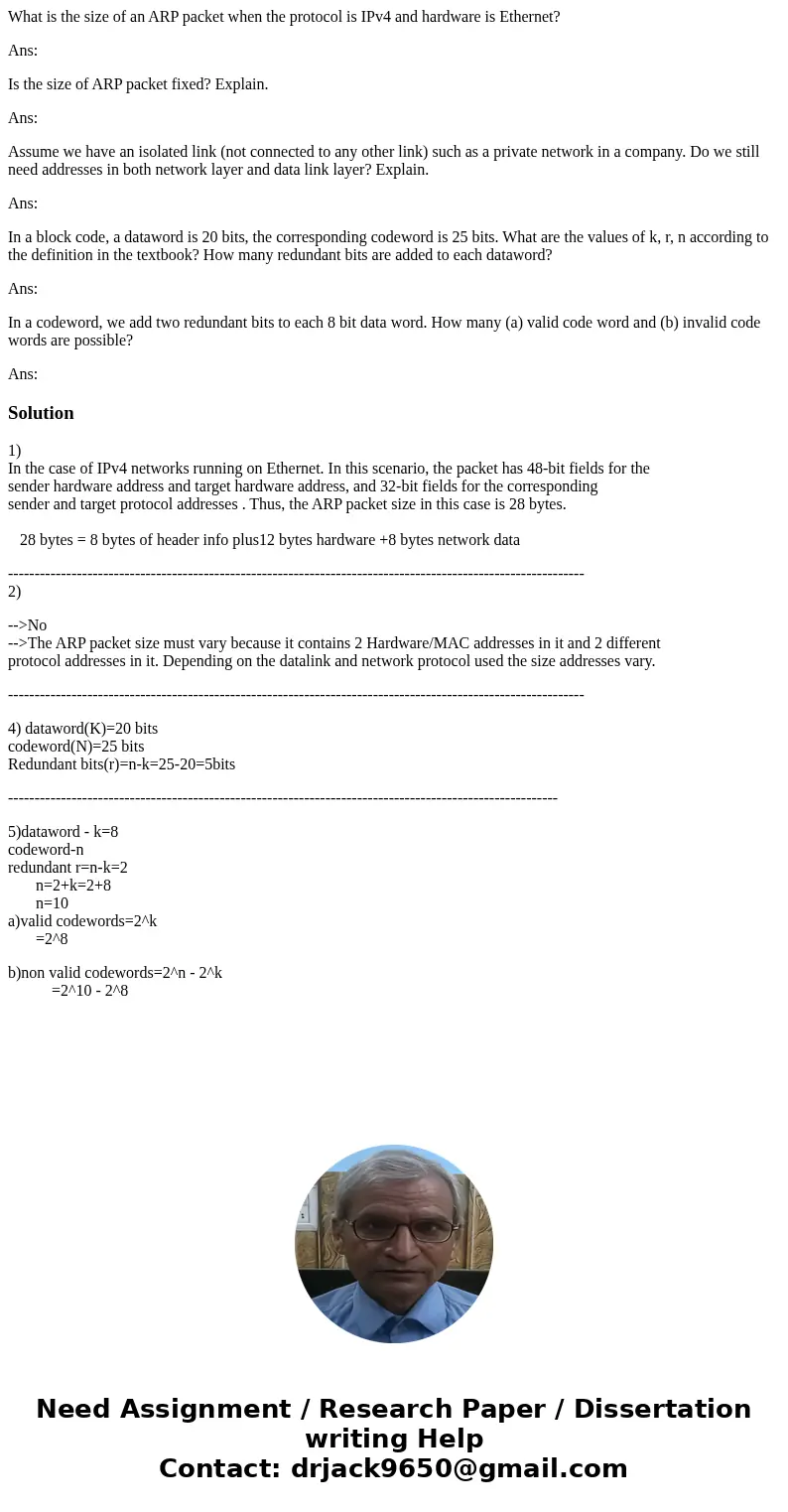What is the size of an ARP packet when the protocol is IPv4
What is the size of an ARP packet when the protocol is IPv4 and hardware is Ethernet?
Ans:
Is the size of ARP packet fixed? Explain.
Ans:
Assume we have an isolated link (not connected to any other link) such as a private network in a company. Do we still need addresses in both network layer and data link layer? Explain.
Ans:
In a block code, a dataword is 20 bits, the corresponding codeword is 25 bits. What are the values of k, r, n according to the definition in the textbook? How many redundant bits are added to each dataword?
Ans:
In a codeword, we add two redundant bits to each 8 bit data word. How many (a) valid code word and (b) invalid code words are possible?
Ans:
Solution
1)
In the case of IPv4 networks running on Ethernet. In this scenario, the packet has 48-bit fields for the
sender hardware address and target hardware address, and 32-bit fields for the corresponding
sender and target protocol addresses . Thus, the ARP packet size in this case is 28 bytes.
28 bytes = 8 bytes of header info plus12 bytes hardware +8 bytes network data
-------------------------------------------------------------------------------------------------------------
2)
-->No
-->The ARP packet size must vary because it contains 2 Hardware/MAC addresses in it and 2 different
protocol addresses in it. Depending on the datalink and network protocol used the size addresses vary.
-------------------------------------------------------------------------------------------------------------
4) dataword(K)=20 bits
codeword(N)=25 bits
Redundant bits(r)=n-k=25-20=5bits
--------------------------------------------------------------------------------------------------------
5)dataword - k=8
codeword-n
redundant r=n-k=2
n=2+k=2+8
n=10
a)valid codewords=2^k
=2^8
b)non valid codewords=2^n - 2^k
=2^10 - 2^8

 Homework Sourse
Homework Sourse